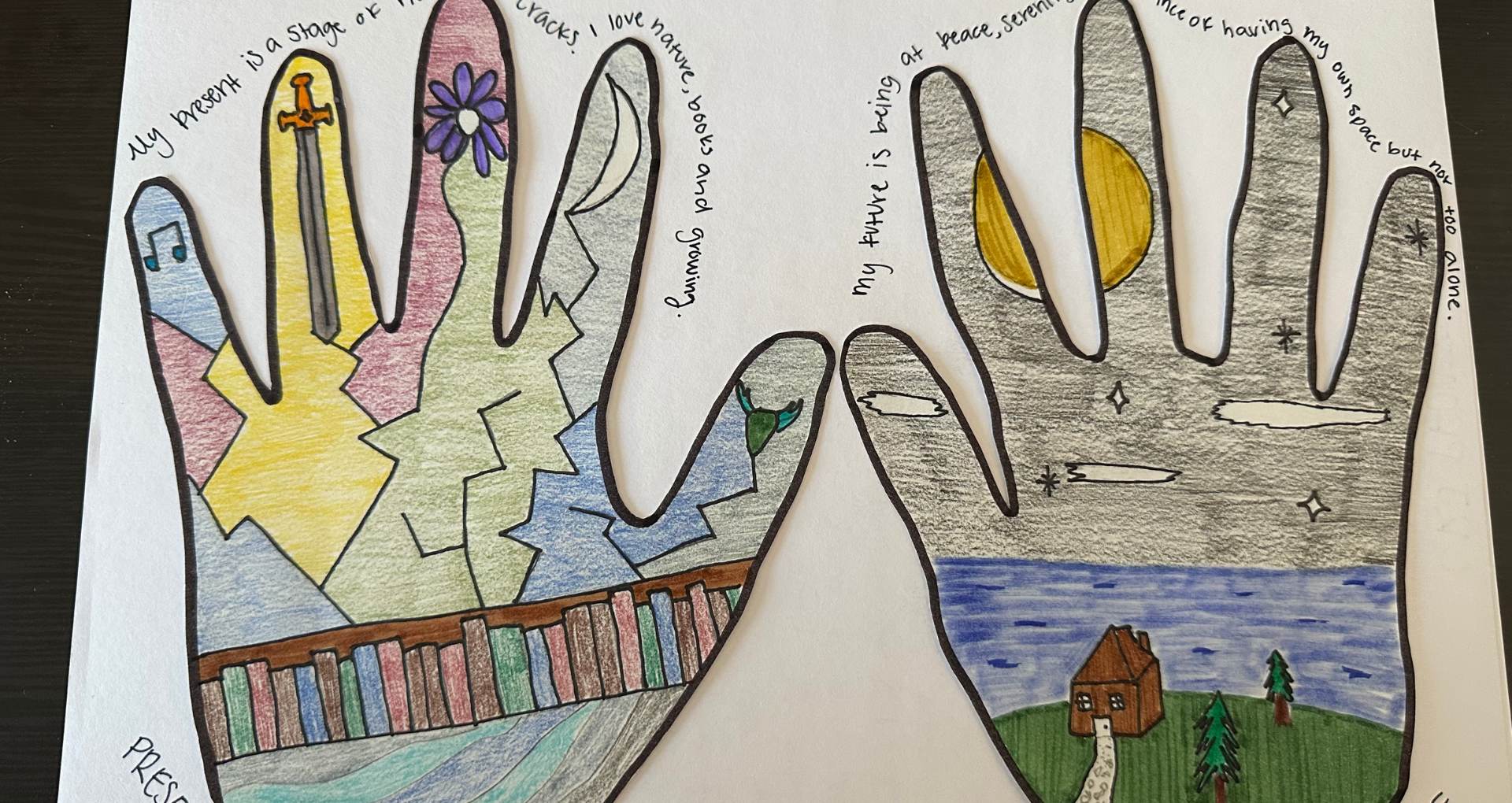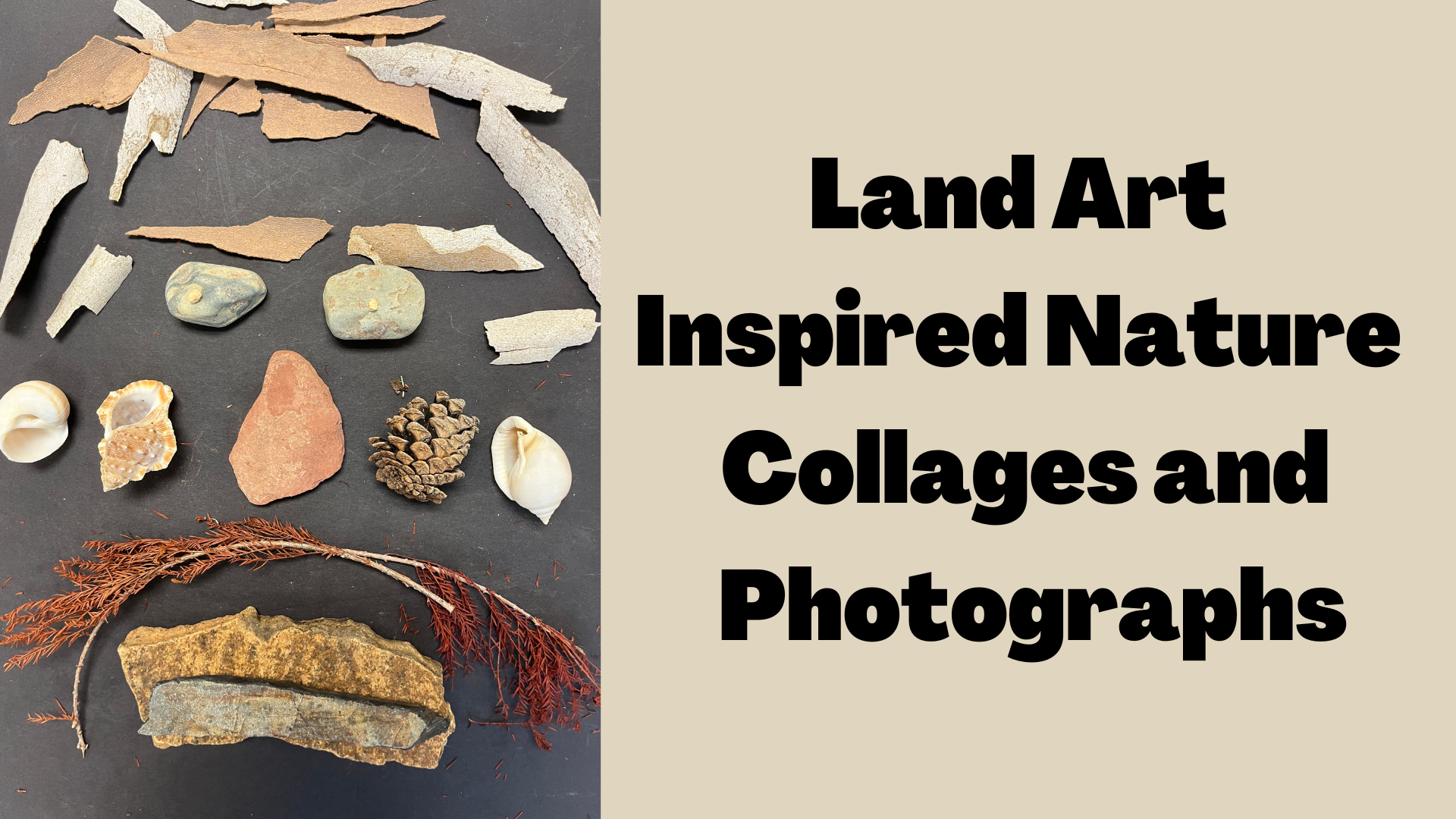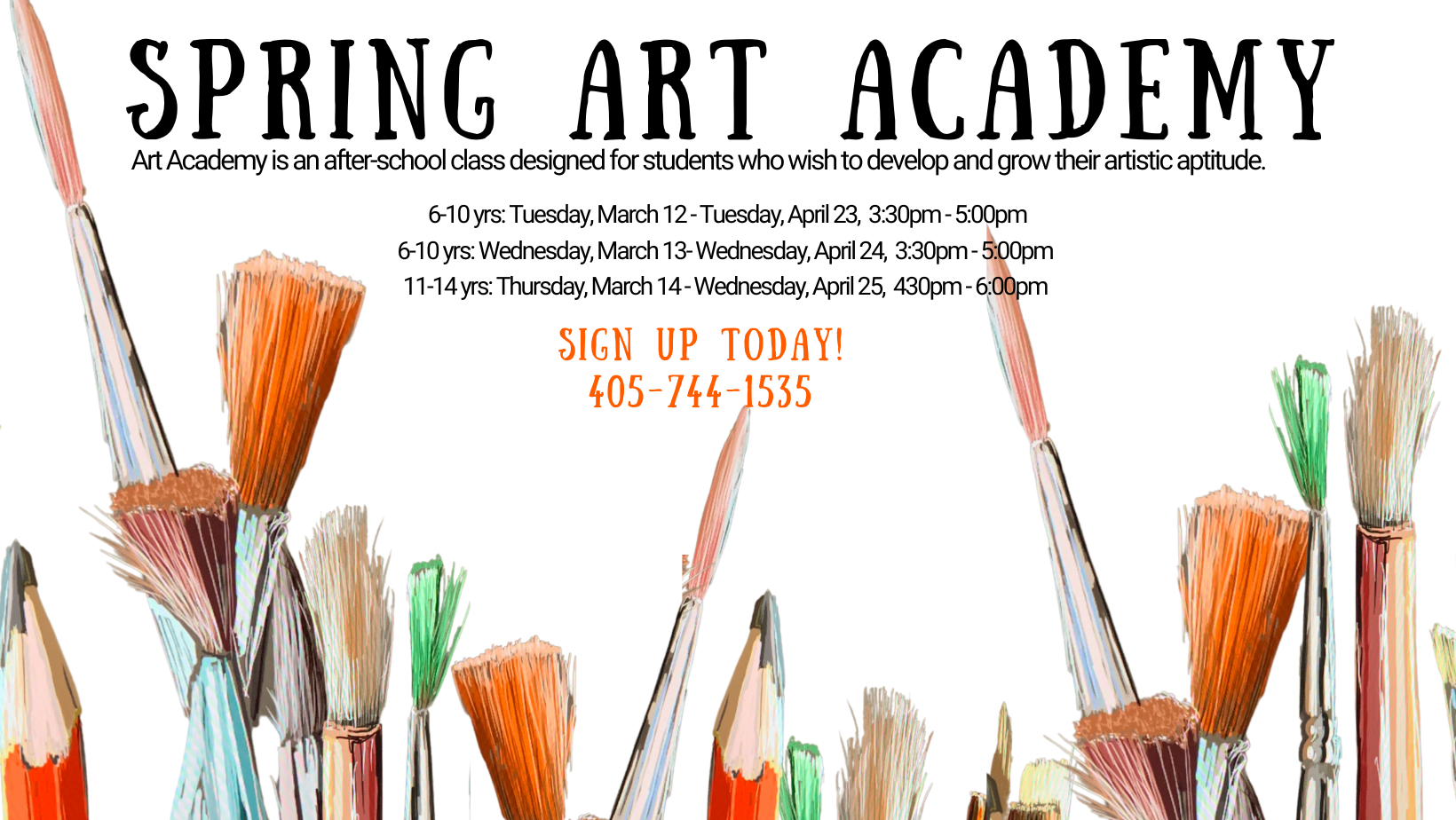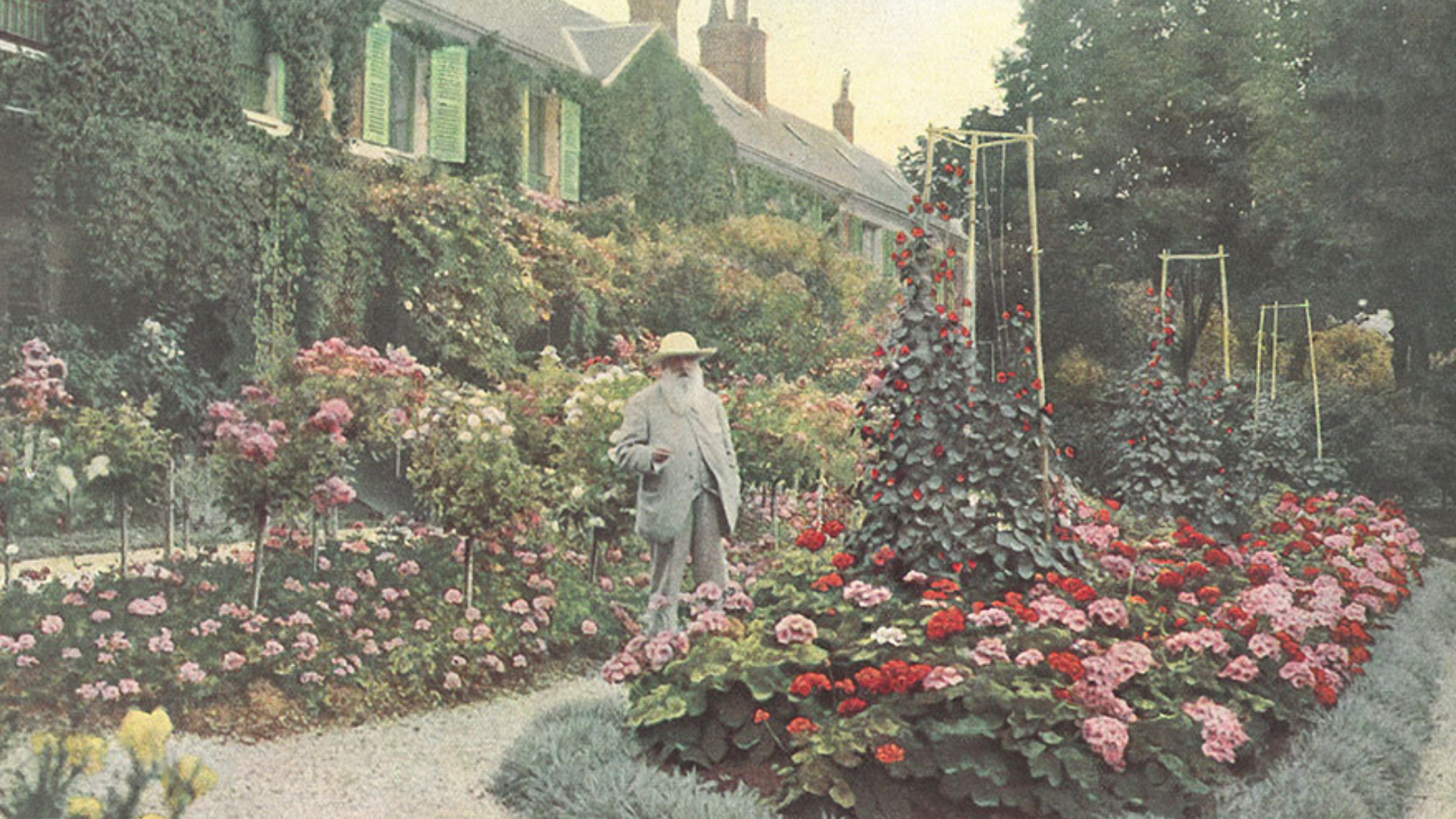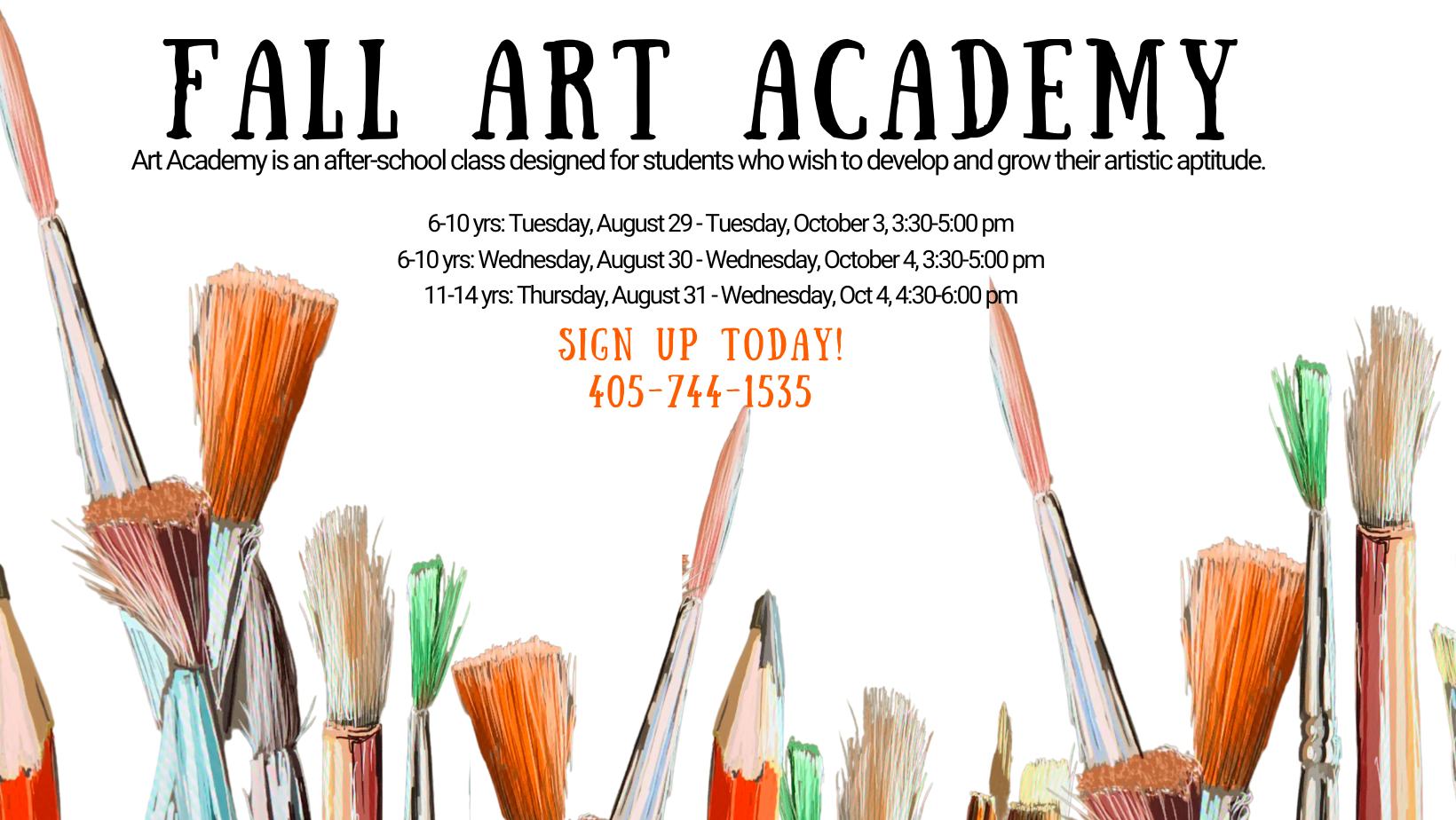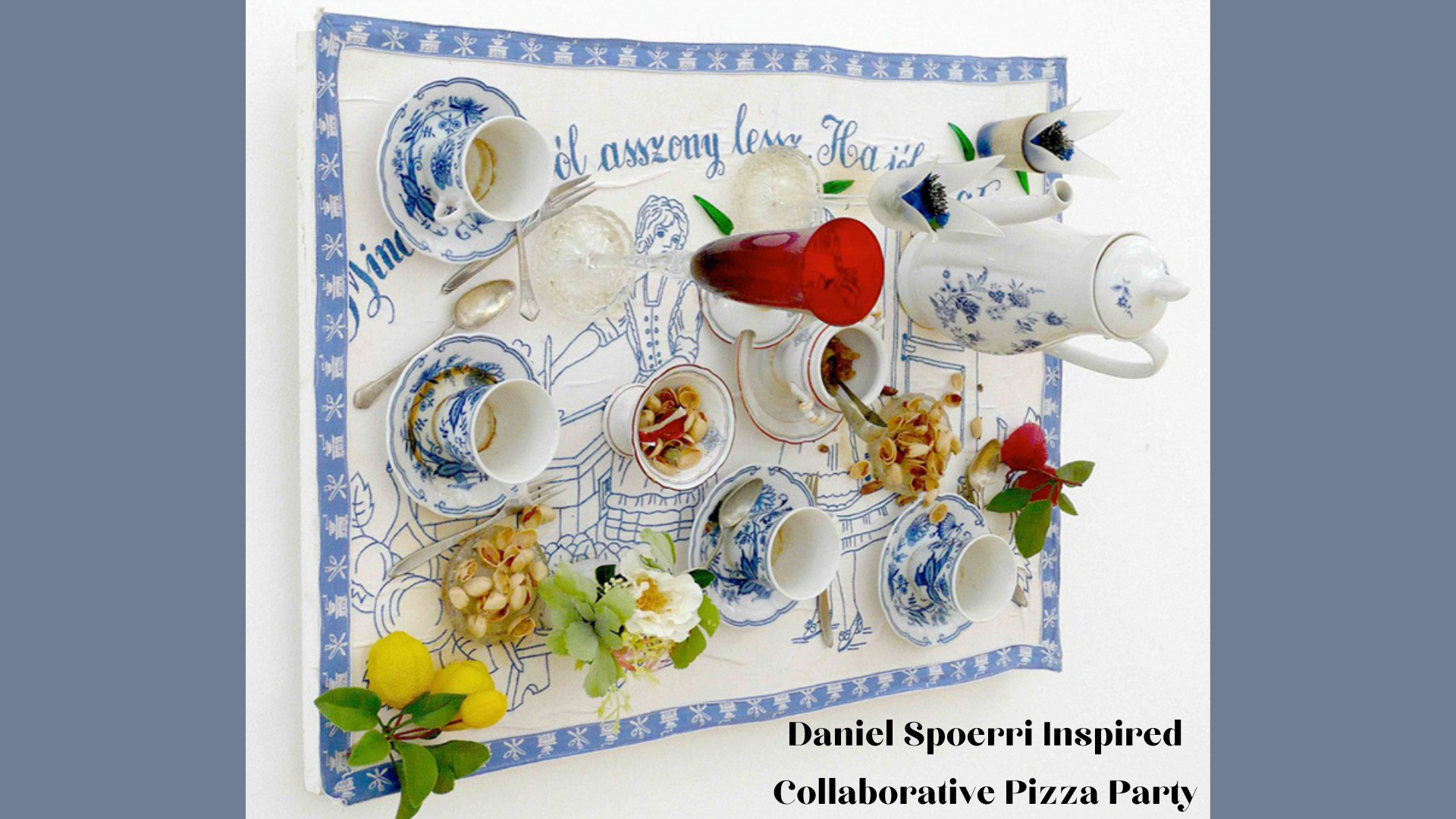1001 S Duck Street, Stillwater, OK 74074
(405) 744-1535 | infoartscenter@okstate.edu
Youth Classes
Land Art Inspired Nature Collages and Photographs
Spring Art Academy
Art Academy is an after-school class designed for students who wish to develop and grow their artistic aptitude. Throughout each six week session, students learn and practice foundational skills in the visual arts and are exposed to a variety of mediums in both the 2D and 3D arts. Art Academy students also develop strong visual literacy and critical thinking skills through looking at and discussing their own artwork and the artwork of others. For the 6-10 year old cohort, each session yields a "final" work or project that is shared and discussed. For the 11-14 year old students, the focus shifts to skills-based instruction with an emphasis on drawing, painting, design, and composition.
Gelli Plate Printing + Collage Inspired by Monet's House and Garden in Giverny, France
Fall Art Academy
Art Academy is an after-school class designed for students who wish to develop and grow their artistic aptitude. Throughout each six week session, students learn and practice foundational skills in the visual arts and are exposed to a variety of mediums in both the 2D and 3D arts. Art Academy students also develop strong visual literacy and critical thinking skills through looking at and discussing their own artwork and the artwork of others. For the 6-10 year old cohort, each session yields a "final" work or project that is shared and discussed. For the 11-14 year old students, the focus shifts to skills-based instruction with an emphasis on drawing, painting, design, and composition.
Daniel Spoerri Inspired Collaborative Pizza Party
In the first session of Art Academy for 6-10 year olds this spring, we looked at artists and artwork inspired by food and our rituals and habits around eating. For this project, we took our inspiration from contemporary Swiss artist, Daniel Spoerri, who is best known for his so-called "snare pictures," which are large scale assemblages of what is left on a table after a meal has been eaten by a group of people. These works are made up of "used" cutlery, dinnerware, and napkins. They might also include spilled drinks, leftover bites, change, ashtrays, flower arrangements, wine corks and bottles, or paper ephemera left behind by one of the diners. His works are hung up on the wall, taking the table and its contents to the vertical. Viewed like this, they become intriguing tableaus with clues about what has happened in the moments before we, the viewers, arrived. Our students had fun following the clues and making educated guesses about who was there, what was eaten, and where the meal was enjoyed. In viewing Spoerri's work, they readily made connections to their own experiences dining with family and friends and to the idea that these times are poignant and celebratory. It was easy after this conversation to leap into creating our own tableau of a pizza party interrupted. This lesson could be adapted for students K-12.

